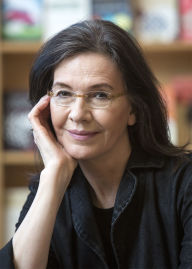On a spring morning in 1932, young Karl and Mary Adare arrive by boxcar in Argus, North Dakota. After being orphaned in a most peculiar way, they seek refuge in the butcher shop of their aunt Fritzie and her husband, Pete; ordinary Mary, who will cause a miracle, and seductive Karl, who lacks his sister's gift for survival, embark upon an exhilarating life-journey crowded with colorful, unforgettable characters and marked by the extraordinary magic of natural events.
The bestselling, award-winning author of The Painted Drum, Louise Erdrich dazzles in this vibrant and heartfelt tale of abandonment and sexual obsession, jealousy and unstinting love that explores with empathy, humor, and power the eternal mystery of the human condition.
Washington Post Book World
Captivating.
Chicago Sun-Times
The dialogue is brilliant from start to finish. And MAry, Karl, Selestine, Sita, and Dot are all original and powerful characters who, like their relatives in Love Medicine, left me exhilarated, somewhat drained, and very grateful to this immensely gifted novelist.
Los Angeles Times
She is a luminous writer and has produced a novel rich in movement, beauty, event. Her prose spins and sparkles, and dances right on the heart when it needs to.
Michiko Kakutani
A remarkable and luminous novel. —New York Times
Robert Bly
A book of power and precision....[Louise Erdrich's] two books together provoke in me amazement and gratitude at this splendid, feisty talent. —New York Times Book Review
Dan Cryer
Written with extraordinary power, compassion, and insight into the human heart....Erdrich has vaulted into the front ranks of American literature. —Newsday
















